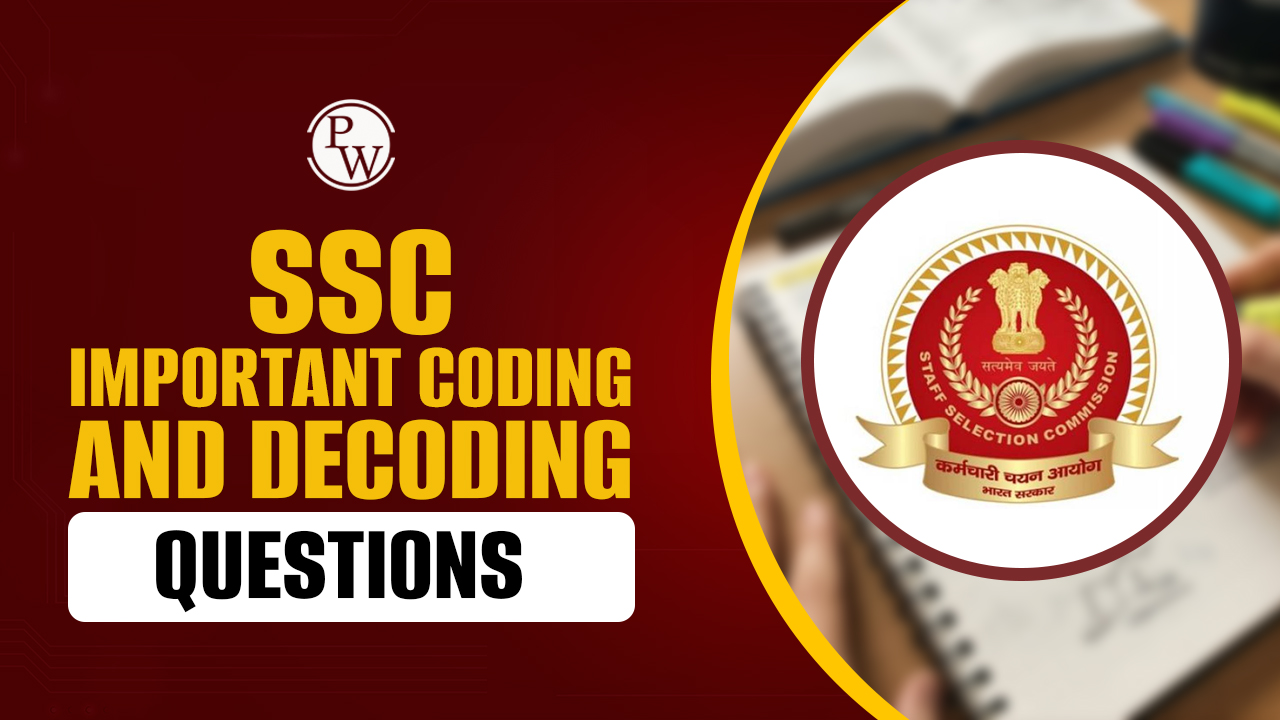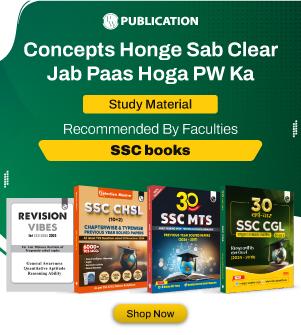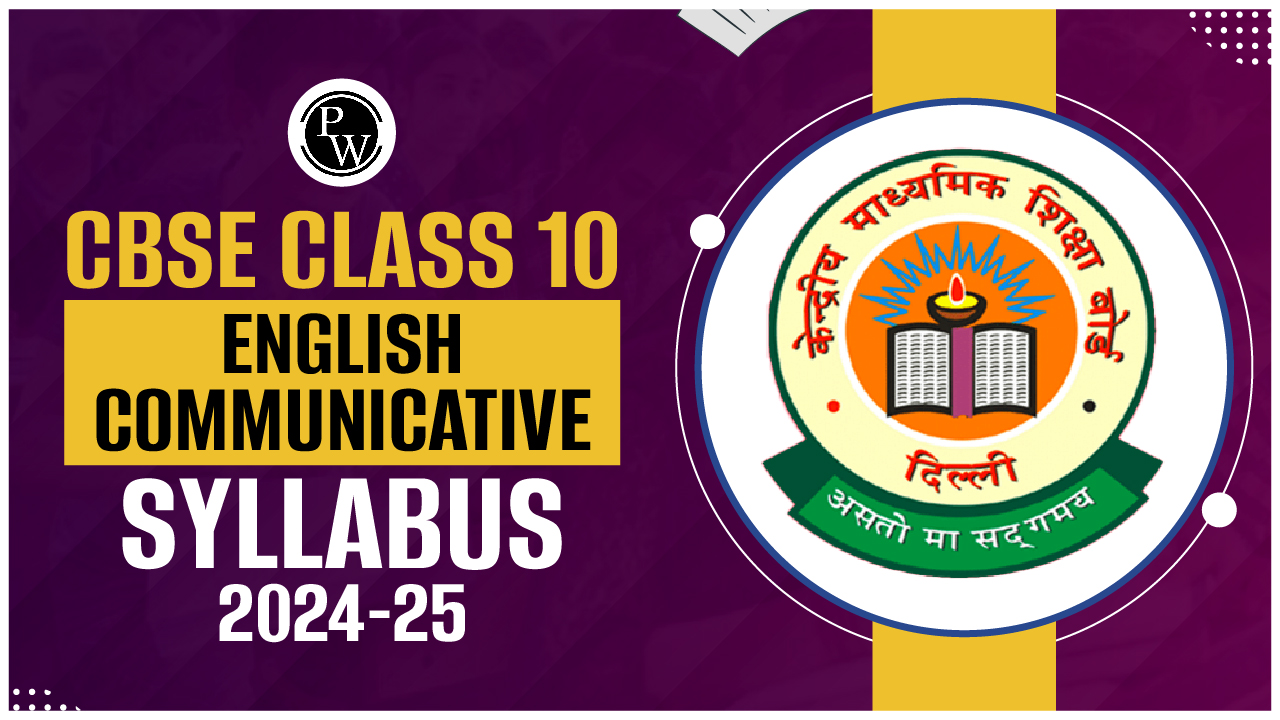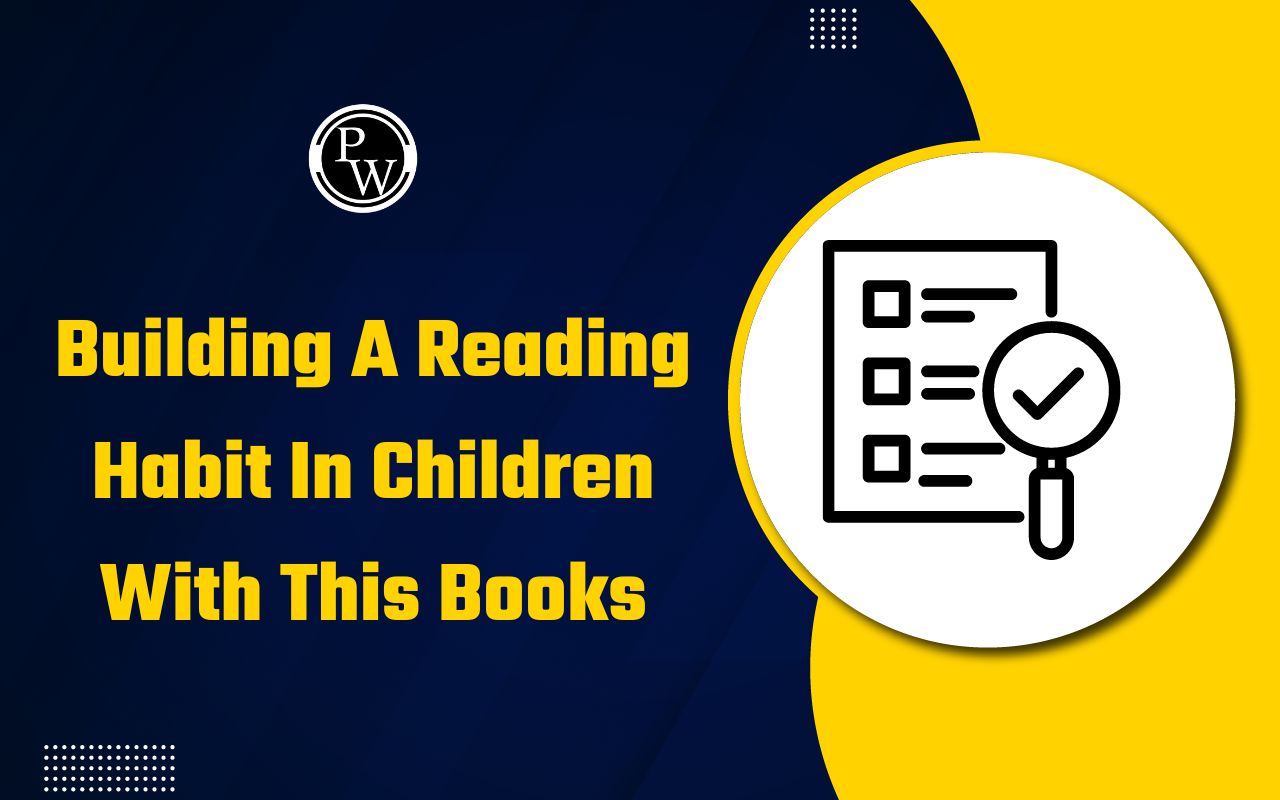SSC Important Coding and Decoding Questions

SSC Important Coding and Decoding Questions: The Staff Selection Commission (SSC) is one of India’s leading government recruitment bodies that conducts exams to fill vacancies in various ministries, departments, and organisations of the Central Government. Whether it's SSC CGL (Combined Graduate Level), SSC CHSL (Combined Higher Secondary Level), SSC GD (General Duty), SSC CPO (Central Police Organisation), or SSC MTS (Multi-Tasking Staff), each of these examinations includes a dedicated reasoning section.
One of the most scoring topics in this section is Coding and Decoding. From basic letter substitutions to complex positional patterns, coding-decoding problems test a candidate's logical thinking and pattern recognition skills. Since this topic appears in almost every SSC exam, regular practice can help candidates score full marks in this section. It is not only a high-scoring area but also takes less time to solve if you understand the patterns well. That’s why mastering Coding and Decoding is essential for anyone preparing for SSC 2025.
Check Out: SSC Books
SSC Exams 2025: Posts Offered
SSC conducts multiple exams throughout the year. Each exam recruits for different government posts based on eligibility and qualification level. Check out the SSC Exam details.
|
SSC Exam Name |
Posts Offered |
|
SSC CGL (Graduate Level) |
Assistant Section Officer, Inspector, Auditor, Accountant, Assistant, etc. |
|
SSC CHSL (10+2 Level) |
Lower Division Clerk (LDC), Junior Secretariat Assistant (JSA), Postal Assistant, Sorting Assistant, DEO |
|
SSC MTS |
Multi-Tasking Staff (Non-Technical), Havaldar (CBIC & CBN) |
|
SSC GD |
Constable in CAPFs (BSF, CRPF, CISF, ITBP, SSB), Rifleman in Assam Rifles |
|
SSC CPO |
Sub-Inspector in Delhi Police, CAPFs, Assistant Sub-Inspector in CISF |
|
SSC JE |
Junior Engineer in Civil, Mechanical, and Electrical departments |
|
SSC Stenographer (C & D) |
Stenographer Grade C and D in various government departments |
|
SSC Selection Post |
Various posts across ministries depending on qualification level |
|
SSC JHT |
Junior Hindi Translator, Junior Translator, Senior Hindi Translator |
Check Out: SSC Previous year Papers
SSC Important Coding and Decoding Questions
Q1. In a certain code language, ‘JAMB’ is coded as ‘5139’ and ‘BALM’ is coded as ‘9521’. What is the code for ‘L’ in the given code language?
GD 04 Feb., 2025, S-1
(a) 5 (b) 9 (c) 2 (d) 1
Q2. In a certain code language ‘PGMS’ is coded as ‘9-18-12-6’ and ‘TBRX’ is coded as ‘5-23-7-1’. What is the code for ‘KAVO’ in the given language?
GD 04 Feb., 2025, S-2
(a) 14-24-3-10 (b) 13-25-6-12 (c) 11-21-2-9 (d) 15-26-4-11
Q3. In a certain code language, ‘TEDI’ is coded as ‘11’ and ‘SUCBVO’ is coded as ‘13’. How is ‘YXJIAZL’ coded in the given language?
GD 04 Feb., 2025, S-2
(a) 9 (b) 10 (c) 14 (d) 12
Q4. In a certain code language, ‘BIGS’ is coded as ‘4593’ and ‘SING’ is coded as ‘9432’. What is the code for ‘N’ in the given code language?
GD 04 Feb., 2025, S-3
(a) 2 (b) 9 (c) 4 (d) 3
Q5. In a certain code language, ‘TDZM’ is coded as ‘8-24-2-15’ and ‘KRIY’ is coded as ‘17-10-19-3’. What is the code for ‘HAWP’ in the given code language?
GD 04 Feb., 2025, S-3
(a) 23-25-6-11 (b) 22-9-7-13 (c) 19-8-5-14 (d) 20-27-5-12
Q6. In a certain code language, 'LAMP' is coded as 'IWJL'. What is the code for 'LOGS' in that code language?
GD 20 Feb., 2024, S-1
(a) IKDO (b) IKEO (c) IKDP (d) IJDO
Q7. In a certain code language, 'TDG' is coded as '1680', 'BHI' is coded as '432'. What is the code for 'KCE' in that code language?
GD 20 Feb., 2024, S-2
(a) 520 (b) 425 (c) 495 (d) 465
Q8. In a certain code language, 'TOWARD' is coded as '962147', 'WANTED' is coded as '213957'. What is the code for 'WARRANT' in that code language?
GD 20 Feb., 2024, S-2
(a) 2133129 (b) 2145129 (c) 2144139 (d) 2144129
Q9. In a certain code language, 'ALLIES' is coded as 'REHLKA'. What is the code for 'BALLET' in that code language?
GD 20 Feb., 2024, S-3
(a) SEKLZB (b) SDKLZB (c) SEKLZC (d) SEKZLB
Q10. In a certain code language, if AMRITSAR is coded as MAIRSTRA, DURGAPUR is coded as UDGRPARU, then what will SHILLONG be coded as?
GD 20 Feb., 2024, S-3
(a) GNLIOLSH (b) NGLOILSH (c) HSLIOLGN (d) HSLOILGN
Q11. In a certain code language, 'BEHALF' is coded as 'DCJYND'. What is the code for 'CLINIC' in that code language?
GD 20 Feb., 2024, S-4
(a) EJKLKA (b) EJLLLA (c) EJKLLB (d) EJKLKB
Q12. In a certain code language, 'MATURE' is coded as '82', 'HIGHER' is coded as '59'. What is the code for 'ASIAN' in that code language?
GD 20 Feb., 2024, S-4
(a) 44 (b) 42 (c) 46 (d) 48
Q13. In a certain code language, if RAINBOW is coded as 'S19OC15X' and SUNSHINE is coded as 'T21OT19O5', then what will MOONLIGHT be coded as?
GD 21 Feb., 2024, S-1
(a) N1515ON9HIU (b) N1515OM9HIU (c) N151509MHIU (d) N1515M9OHIU
Q14. In a certain code language, if TEA is coded as RFY, COFFEE is coded as APDGCF, then what will SUGAR be coded as?
GD 21 Feb., 2024, S-1
(a) TVHBS (b) QVEBP (c) QTEZP (d) QSEYP
For more SSC Important Coding and Decoding Questions, check out the below link:
SSC Important Coding and Decoding
How to Prepare for SSC Important Coding and Decoding?
Coding and Decoding is one of the most scoring and logical topics in the Reasoning section of SSC exams like SSC CGL, CHSL, MTS, GD, and CPO. With a strong understanding of letter positions, common patterns, and enough practice, you can solve these questions quickly and accurately. Here's a step-by-step guide to help you master it.
1. Understand the Types of Coding and Decoding
To begin with, you must know the different types of questions asked in this topic:
-
Letter Coding: Each letter is replaced with another letter based on a specific rule.
-
Number Coding: Words are coded as numbers using arithmetic operations on letter positions.
-
Substitution Coding: One word is substituted with another, and you must decode the actual meaning.
-
Mixed or Sentence Coding: Two or more sentences are coded, and you need to match the codes to decode individual words.
2. Learn Letter Positions (A–Z = 1–26)
This is a basic but essential step. Know the position of each letter in the alphabet. For example:
A = 1, B = 2, ..., Z = 26
Also, learn the reverse positions:
A = 26, B = 25, ..., Z = 1
Tip: Reverse Position = 27 - (Actual Position)
This helps in solving reverse coding questions where letters are swapped with those from the other end of the alphabet.
3. Practice Common Patterns
Start observing the changes between letters:
-
Forward or backward shifts like +1, -1, +2, etc.
-
Reversing letters in the word.
-
Changing letters to their position numbers and doing arithmetic.
-
Letter pairs such as A-Z, B-Y, C-X, etc.
For example:
If CAT — DBU, then the pattern is +1 shift to each letter.
4. Use Option Elimination Method
In SSC exams, options are given. So instead of cracking the whole code from scratch, you can apply each option to see which one fits the question logic. This saves time, especially in time-bound exams.
-
Maintain a Formula & Pattern Sheet
-
Keep a short notebook of commonly used tricks and patterns. Include:
-
Letter positions A–Z
-
Reverse positions
-
Squares and cubes of numbers
-
Common arithmetic coding styles
-
This will help you revise quickly before the exam.
5. Solve Previous Year Questions (PYQs)
SSC often repeats logic or question patterns from previous exams. Practice at least 5 years of coding-decoding PYQs. This gives you a real idea of the level of difficulty and types of questions SSC prefers.
6. Attempt Topic-Wise Practice Tests
Focus on sectional tests where only reasoning or only coding-decoding is included. This builds speed and accuracy. Try to solve questions within 30–40 seconds each during practice.
7. Don't Overcomplicate the Logic
Most SSC coding-decoding questions follow very direct logic. Avoid thinking too deeply or applying unnecessary logic. Stick to simple arithmetic or position-based reasoning first.
8. Learn by Solving, Not Just Reading
The best way to prepare is to solve 10–15 coding questions daily. Break them down, understand the pattern, and try creating your own codes as well. This will make you confident and exam-ready.
9. Practice Mixed-Type Questions
Once you're comfortable with individual types, move on to mixed questions where you might get letter+number, or word+sentence logic. These appear in SSC GD and CGL Tier 1.
Read More: SSC Reasoning Syllabus 2025 and Important Topics
SSC Coding and Decoding FAQs
Q1. Is Coding and Decoding asked in all SSC exams?
Yes, Coding and Decoding questions are a common part of the Reasoning section in almost all SSC exams including SSC CGL, CHSL, MTS, GD, CPO, and Stenographer.
Q2. How many questions are usually asked from Coding and Decoding?
Generally, 2 to 4 questions are asked in the Tier 1 papers of SSC CGL, CHSL, and GD. In some exams like CPO or MTS, it may vary between 1 to 3.
Q3. What are the main types of Coding and Decoding questions?
The major types include:
-
Letter Coding
-
Number Coding
-
Substitution Coding
-
Mixed/Sentence Coding
-
Symbol and Letter based Coding
Q4. Is Coding and Decoding a scoring topic?
Yes, it is one of the most scoring topics in reasoning. With basic practice and clear understanding of patterns, questions can be solved in less than a minute.
Q5. Do I need to memorise alphabet positions for this topic?
Yes, knowing the A–Z positions (A=1 to Z=26) and reverse positions helps in solving letter-based questions quickly and accurately.











